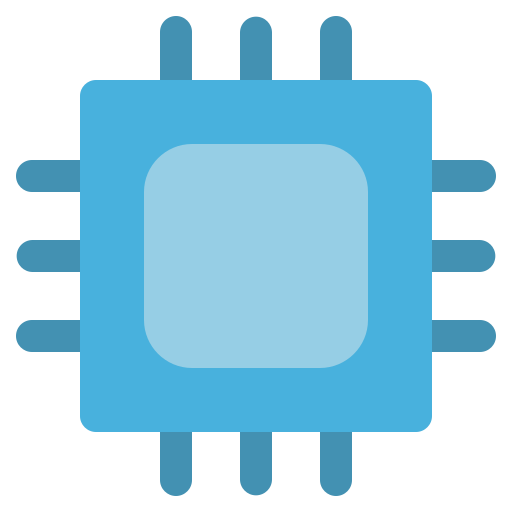Oh, you actually believed that story? Whoops. Sorry! It was actually me who ate your Cheetos and downed your Vodka.
Norgur
- 2 Posts
- 48 Comments
It doesn’t. It will require you to reboot for every god-damned line of code that has changed.
Na, nothing. Did an update today. Nothing bad happened at al, Because why would it?

 7·4 months ago
7·4 months agoMany of the machines in question will have safe mode walled off for security reasons anyway.

 10413·4 months ago
10413·4 months agoI really have a hard time deciding if that is the scandal the article makes it out to be (although there is some backpedaling going on). The crucial point is: 8% of the decisions turn out to be wrong or misjudged. The article seems to want us to think that the use of the algorithm is to blame. Yet, is it? Is there evidence that a human would have judged those cases differently? Is there evidence that the algorithm does a worse job than humans? If not, then the article devolves onto blatant fear mongering and the message turns from “algorithm is to blame for deaths” into “algorithm unable to predict the future in 100% of cases”, which of course it can’t…

 2·4 months ago
2·4 months agoThat’s what happens when a) the CPU manufacturer drives the chips to the absolute limit in order to “win the benchmarks” b) then the mainboard manufacturer drives the chips even further in order to “win the benchmarks” and then c) the user goes over even that because the CPU is “overclockable” (which is sold as a feature) and one wants to “win the benchmarks”
And all of that, while the added performance of high-tier CPUs and/or overclocking, is often minimal in the grand scheme of things at best. CPUs get marketed and hyped by the media with percentages, not with absolute numbers. Want to know why that is? Because a “10% performance increase” sounds substantial, right? Well, humans are rubbish when it comes to intuition and numbers. A 10% performance plus is an increase from 100FPS to 110FPS. Depending on how sensitive you are to FPS, that might be visible, for many others it’s just not. Yet, those increases come at hefty costs regarding power consumption and heat generated, usually. The lesson is: Going for the fastest, beefiest CPU is a bad idea in about 90% of use cases, I’d say.

 48·4 months ago
48·4 months agoBack in the day, when I installed my very first Linux OS, I had a wireless stick from Netgear. Wireless Drivers back then were abysmal, so I had to compile them from source (literally 15 mins after seeing a TTY for the first time). After I had found out how build-dependencies and such worked somehow and ./configure completed successfully for the first time, the script ended with the epic line:
configure done. Now type 'make' and pray

 543·4 months ago
543·4 months agoThe enemy of my enemy, eh?

 304·4 months ago
304·4 months agoglibc 2.36 is all you’ll ever need, okay? Go away with those goddamn backports!
I don’t. So… uhm… you’re wrong I guess.
You know how Linux killed the chef?
With a fork bomb

 841·4 months ago
841·4 months agoI also know that I cannot tell the difference between two IPv6 addresses because they all merge into an indiscernible blur inside my head
Dmarc/dkim/SPF/certs. Fun times!
I got a mall server running, yet it’s almost more as an inbox.
Why can’t you? I don’t see where the issue is. During password creation, you choose your organization and it’s done. If the entry already exists, edit the entry and choose the organization under “owner”. It’s four clicks max. Do you use this so differently than I do?
That’s what organizations are for in Bitwarden. They are groups you can give passwords to instead of your personal vault and people in said organizations can then see them just as their own passwords. That’s exactly what you described, no?
Well,.Bitwarden is here for you. You can even self host Bitwarden and skip fees all together if you feel so inclined at some point.
BEFORE you mess with your VNC, it is extremely important to have a backup connection. So either you have the ability to connect your pi to a monitor and a keyboard locally, or you really, really should setup SSH before you mess with your VNC server.
Use SSH with a Certificate, described here: https://raspberrypi-guide.github.io/networking/connecting-via-ssh (“passwordless”) This guide doesn’t show how to set up SSH, but how to install a key in a more detailed way: https://pimylifeup.com/raspberry-pi-ssh-keys/
The good thing: Once you got this working, you’re basically done. Just ditch VNC and go straight to SSH from now on. It’s more secure and has better performance usually.
Yet, if you like your VNC and want to continue using it, you first connect via SSH do not do this while using a VNC connection! Now, first, you do all this: https://www.tomshardware.com/how-to/install-vnc-raspberry-pi-os then you do a
sudo update-alternatives --list vncserver sudo update-alternatives --list vncserver-x11you should see tightvnc listed there. Don’t freak out if one of the two returns an error that the application was not found. That’s okay. Not all versions of Raspbian used the same application name in the past, so I listed them both. As long as one of them works, you’re fine.
Then, you do a
sudo update-alternatives --config vncserver sudo update-alternatives --config vncserver-x11and change it to tightvnc. now you can stop your running VNC:
sudo vncserver-x11 -service -stop && sudo vncserver -service -stop sudo vncserver-x11 -service -start && sudo vncserver -service -startOnce you did that, connect to tightvnc as described in the article. If this works, do
sudo apt uninstall realvncYou should now be able to connect via VNC without weird account bullshit.
And once you have found your specific collection of plugins that happen not to put the exact features you need behind a paywall but others, you ain’t touching those either.

 611·5 months ago
611·5 months agoHow is Microsoft related to a tool to scan Linux for malware?




sadly, no. Anticheat Systems are designed to be paranoid as fuck. So even some readout of the hardware used that WINE handles a tad differently than Windows might trip it.